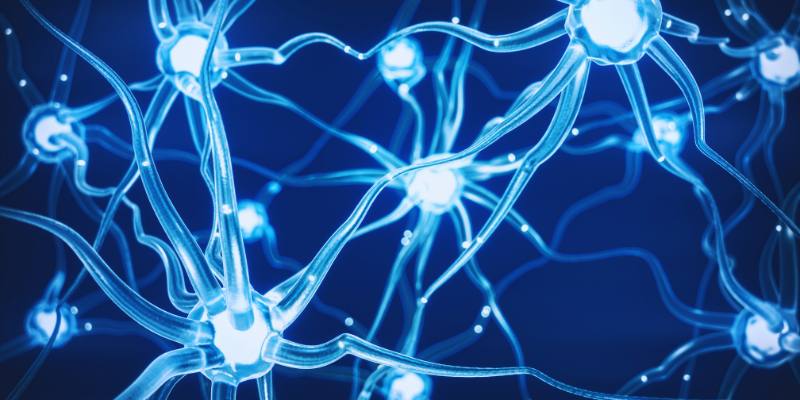In artificial intelligence, activation functions play a decision-making role in a neural network. They determine whether a neuron should be activated based on the given input. It allows AI models to process information, recognize patterns, and make predictions. Without activation functions, a neural network would pass raw data forward like a basic mathematical model.
Activation functions are important for deep learning because they introduce non-linearity. Different activation functions, like ReLU, sigmoid, tanh, and softmax, are used for different purposes. Choosing the right one impacts how well the model learns and performs. If you want to know what activation functions are, their types, and why they are so important, keep reading!

What Is The Activation Function: An Understanding
An activation function helps a neural network decide whether a neuron should be turned on or off based on input. It uses math to find if an input is important for making predictions. If the input is important, the neuron gets activated and sends information forward. Remember that a neuron, like the brain, receives signals and responds if the signal is strong enough.
In a neural network, each node gets inputs, processes them, and decides whether to pass the information to the next layer. The main job of an activation function is to take the input from a neuron, process it, and convert it into an output. This output is sent to the next layer or used as the final result.

Types of Activation Functions
Let's look at the most commonly used activation functions in neural networks to understand better how they work. The three most popular ones are:
- Binary Step Function: It decides if a neuron should turn on or off based on a set threshold. If the input is above the threshold, the neuron activates; if not, it stays off. However, this function only gives two possible outputs. It is unsuitable for multi-class classification. It also does not work well with optimization algorithms and makes training harder.
- Linear Activation Function: The linear activation function is called the identity function. It outputs the input as it is without any changes. However, it has two major problems. It cannot be used with backpropagation because its derivative is constant. The constant derivative causes the layers to collapse into one. Also, no matter how many layers exist, the network behaves like a single-layer model.
- Non-Linear Activation Functions: Here are the most commonly used activation functions. The following are the different types of non-linear activation functions:
- Sigmoid Activation Function: It has an S-shaped curve and is defined by the formula A = 1 / (1 + e^(-x)). It produces smooth and continuous outputs. It is useful for optimization. The output ranges between 0 and 1, which is helpful for binary classification. It is highly sensitive when input values are between -2 and 2. In sigmoid activation, small input changes can lead to big output changes.
- Tanh Function: It is similar to the sigmoid function but stretched along the y-axis. It is defined as tanh(x) = (2 / (1 + e^(-2x))) - 1 and can also be written using the sigmoid function. Its output ranges from -1 to 1. That's why it is useful for handling complex data patterns. Since it is zero-centered, it helps neural networks learn more efficiently. It is commonly used in hidden layers of deep learning models.
- Relu (Rectified Linear Unit) Function: It is defined as A(x) = max(0, x). This means that it returns x if the input is positive and zero if the input is negative. Its output ranges from 0 to infinity. This activation function is useful for complex patterns. It is also faster and more efficient than sigmoid and tanh because it uses simple calculations.
- Softmax Function: It is used for multi-class classification. It converts raw output scores from a neural network into probabilities to ensure they all add up to 1. It works by adjusting the values of each class to fall between 0 and 1, making it easier to determine the most likely class for an input.
Why Are Activation Functions Important?
Activation functions are important because they help neural networks understand complex patterns in data. Most activation functions are non-linear, which means they allow the network to learn relationships that are not straight or simple. For example, a neural network must recognize different shapes and patterns when processing an image. The network could only learn simple relationships if activation functions were linear. If the activation functions are linear, they struggle with real-world problems that have complicated patterns.
Another reason why activation functions matter is because they help adjust input values to a range that makes the training very simple. Data can come in many different forms. Activation functions transform the variety of data into a known range. It makes it easier for the network to process information correctly. It is useful for classification, generating new content, or training AI to make decisions. Activation functions allow them to solve more advanced problems and make better predictions even if the neural network is complex. Without activation functions, neural networks would not be able to learn usefully.
Choosing the Right Activation Function
When training a neural network, it is usually best to start with ReLU. It works well for many tasks. However, some models may need sigmoid or tanh instead. ReLU is the best choice for hidden layers because it helps the network learn efficiently. On the other hand, sigmoid and tanh should be avoided in hidden layers since they can cause the vanishing gradient problem and make training hard. Choosing the right activation function for the output layer depends on the type of problem:
- Regression: Use a linear activation function, as it directly outputs the predicted value.
- Binary classification: Use sigmoid, which maps values between 0 and 1. It is best for distinguishing between two classes.
- Multi-class classification: Use softmax, which assigns probabilities to multiple classes and ensures they add up to 1.
- Multi-label classification: Use sigmoid because it allows multiple labels to be predicted independently.
Conclusion:
Activation functions are an important part of artificial intelligence and deep learning. They help neural networks process data, recognize patterns, and make the right predictions. Without activation functions, AI models cannot learn or solve real-world problems. The choice of activation function depends on different tasks.
